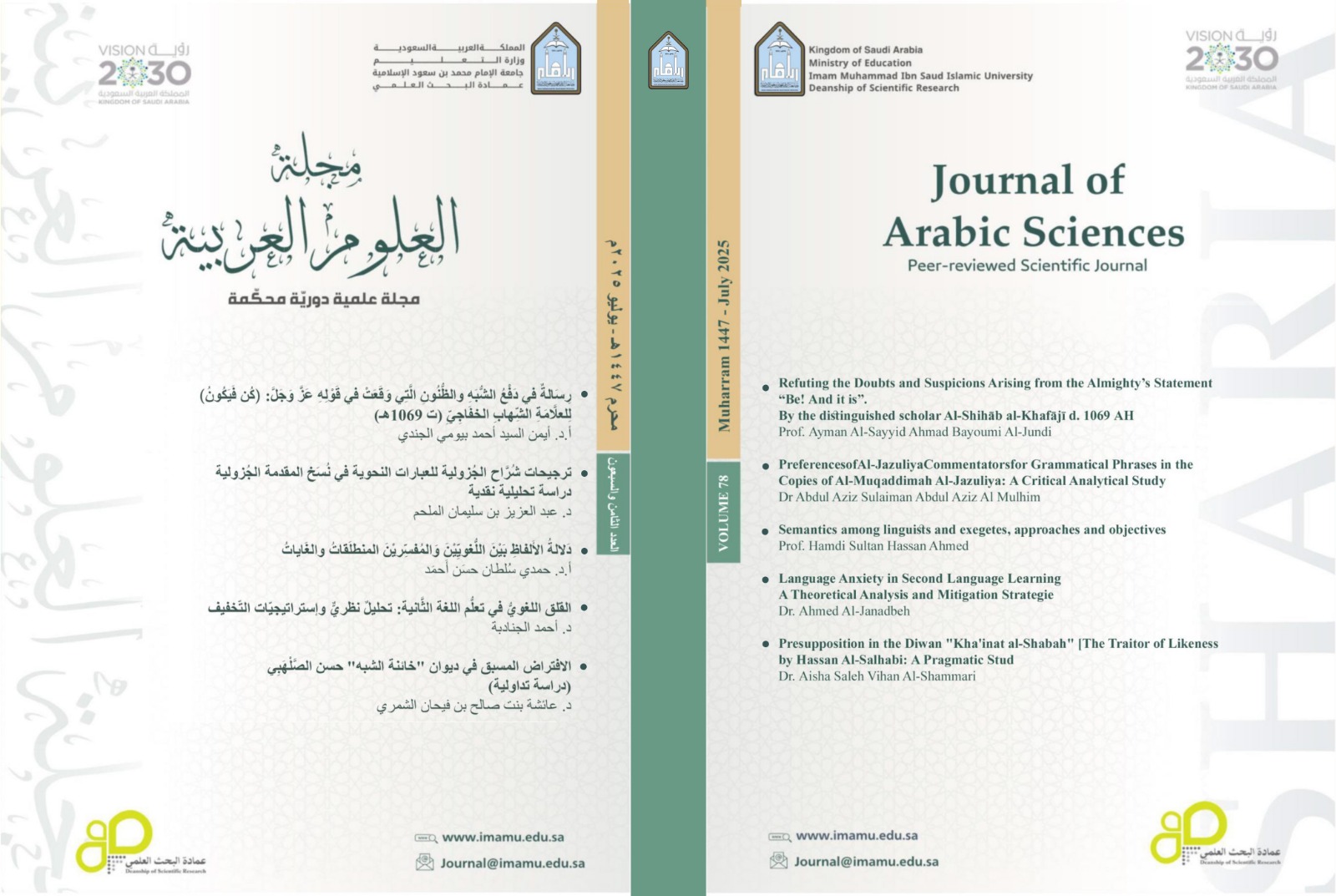Refuting the Doubts and Suspicions Arising from the Almighty’s Statement: “Be! And it is” By the distinguished scholar Al-Shihāb al-Khafājī (d. 1069AH)
Keywords:
Dafʻ-al-shubah-al-ẓunūn-fa-yakūn-al-Shihāb-al-KhafājīAbstract
This research aims to uncover an important heritage treatise that has remained confined to its place, written by the scholar Shihāb al-Dīn Aḥmad ibn mḥmdin ibn ʻmra alkhfājī (d. 1069 AH), titled: Dafʻu alshshubahi wālẓẓunūni allatī waqaʻat fī qawlihi ʻazza wajalla: kun fayakūna (Refuting the Doubts and Misconceptions Regarding the Phrase of the Almighty: Be! And it is "Kun Fayakūn").
This treatise, though small in size, is of great significance and highly beneficial in its field. The author dedicated it to defending the reading of Ibn ʻĀmir, who uniquely read fayakūn in the accusative (nasb) form in four places in the Holy Qur'an. This reading was exclusive to Ibn ʻĀmir among the seven canonical reciters. However, this reading has faced criticism and objections, with some claiming that it contradicts the rules and structure of the Arabic language.
Alshhābi alkhfājyyi treatise affirms the authenticity and validity of this reading both in narration (riwaya) and analysis (diraya), providing a detailed defense against criticisms, refuting objections with clear arguments, and substantiating its correctness with evidence from renowned linguistic scholars, as well as from classical Arabic poetry and prose. He carefully demonstrates that this reading aligns perfectly with grammatical rules and principles, citing various syntactic interpretations and justifications provided by its proponents—who are numerous.
Throughout his discussion, alkhfājyyi employs logical reasoning, linguistic analysis, and compelling evidence. Moreover, he does not overlook the alternative nominative (raf‘) reading of fayakūn in the same Qur'anic contexts. In fact, he begins his treatise by explaining its valid grammatical interpretations before transitioning into his defense of the accusative reading.




